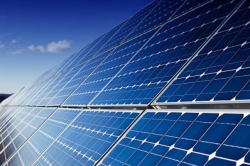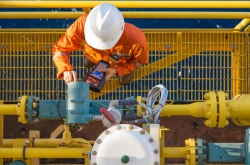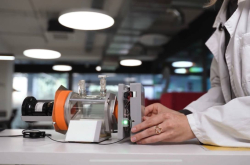Pipelines are fundamentally important to modern industry, especially ones that transport oil and gas, this method being the safest and the most cost-efficient one. However, metal pipes that are used to transport fossil fuels are prone to becoming corroded over time. The speed of corrosion increases greatly due to the fact that fossil fuels are heated to high temperatures during transportation. Experts have found a way to fight this issue using special anti-corrosive coatings. Poly-ureaurethane coatings have been the most efficient in cases involving complex geometry and field application (a process that involves unearthing a section of the pipeline and applying a coating to its warmed-up surface – Ed.), but even they tend to lose their protective properties due to the high temperature of transported material.
These days Russian oil and gas companies tend to use products made by foreign manufacturers. The researchers’ task was to surpass the foreign products’ results and yet make the new coating more affordable to Russian companies working in fossil fuel transportation. To domestic buyers, in terms of cost the new coating will be cheaper than its foreign counterparts while being just as good, if not better, in terms of quality.
Since the operating temperature at which the fossil fuels are delivered is 80 degrees Celsius, the team’s task was to develop a coating that would surpass in temperature resistance the other coatings that only resist temperatures of up to 60 degrees Celsius. According to the scientists, the poly-ureaurethane paint coating has a number of advantages over other types, such as epoxy coatings often offered by other manufacturers. First off, this coating is much simpler and, therefore, cheaper to apply. Secondly, the physical and mechanical properties of it are different, too. For comparison, epoxy coatings are much more brittle and are therefore less resistant to abrasive wear.

Pipeline corrosion. Credit: tial.ru
Due to the addition of inorganic fillers, the new coating is highly resistant and shows better performance than those certified for use at 60 degrees Celsius. The material also possesses great physical and mechanical properties (tensile stress and elongation at break, impact resistance, including in below-zero temperatures) and meets the requirements set by many companies in the oil industry, such as cathodic disbanding, transfer resistance and bursting strength.
“We’ve put a lot of effort into selection of the various micro- and nano-fillers that would provide the needed improvement in performance while avoiding a significant increase in the cost of the end product. Our intention was to develop a coating that would not only hold up to comparison with foreign-made coating materials, but surpass them in its properties,” – says Evgenia Guseva.
Unlike many other poly-ureaurethane coatings, this material contains no solvent or thinning agents. Many of today’s manufacturers are making an effort to cut down on the use of such elements, mainly out of ecological concerns. This is because thinning agents that are still used to manufacture some anti-corrosive coatings are harmful to both the environment and the workers. The vapors that occur when such coatings are applied through airless spraying at high temperature are unsafe for the workers performing this task. Among such agents are toluene and o-Xylene, the vapors of which are most threatening to human health. There is also a lot of government action targeting the use of precursors (chemical reagents used to synthesize narcotic substances). For example, the aforementioned toluene, used in production of a great many types of coating materials, is considered a precursor and its use can be a serious issue for a manufacturer.

Evgenia Guseva
The application method for the new coating is no different than that of the materials already present on the market, so there is no need for companies to reconstruct their production chain. Just as before, the coating can be applied using an airless sprayer in two ways: at the plant soon after the pipeline elements have been manufactured or in field conditions on a section of the pipeline that is already in use. In the latter case, the section in need of reapplication of coating is excavated and delivered to a plant or a specially equipped area where a team of specialists can clean it and apply a new layer of anti-corrosive coating. The material is supposed to last at least ten years. The newly-developed coating has already been tested on a number of strength and longevity properties. Among the most important ones are: tensile strength at break (which showed a high degree of elasticity and durability), abrasion resistance and water absorption, which, at an operation temperature of 80 degrees Celsius, must measure at no more than 5%. A higher result would imply a possibility of stripping or swelling of the material. Another important quality is bursting strength, which determines how much the coating is susceptible to pointed impacts.
The researchers expect to begin showcasing the developed material to manufacturers sometime in 2017.





